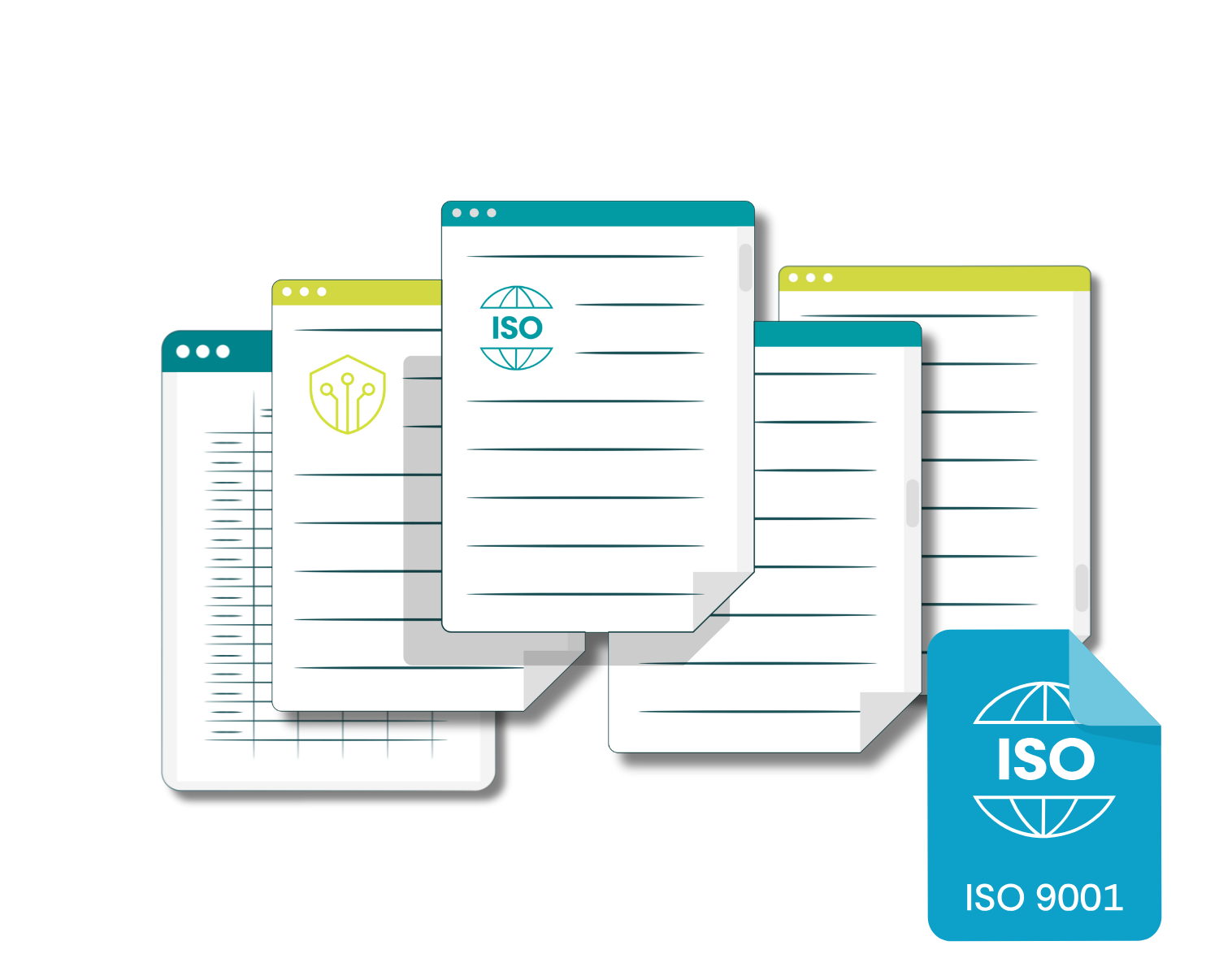When deciding to implement and certify to the ISO9001:2015 standard for a Quality Management System (QMS), it’s important to know what documented information you’re going to need to create for a successful implementation, and to pass the all-important certification audit (if that’s your end goal).
We’ve put together a list of the mandatory documented information required for ISO9001:2015, categorised by mandatory documents and records, and we’ve also added some suggested documents too for an enhanced QMS.
Mandatory documents for ISO9001:2015
The following mandatory documented information is required for certification:
4.3 – Scope of the Quality Management System
5.2 – Quality Policy
6.2 – Quality Objectives
8.4.1 – Procedure for the control of externally supplied products, services, and materials
Mandatory records for ISO9001:2015
The following mandatory records are required for certification:
7.1.5.1 – Records of calibration and maintenance of monitoring and measuring equipment
7.2 – Competence records
8.2.3.2 – Products and services requirement review records
8.3.2 – Records of new requirements for products or services
8.3.3 – Design and development inputs records
8.3.4 – Records of design and development controls
8.3.5 – Design and developments outputs records
8.3.6 – Records of design and development changes
8.4 – Records of evaluation of external suppliers
8.5.1 – Records of characteristics of products and services to be provided
8.5.3 – Records of changes on customer’s property
8.5.6 – Records of changes in products or services provided
8.6 – Evidence of the conformity of products and services
8.7.2 – Nonconformity records
9.1.1 – Information on performance monitoring
9.2 – Internal audits programs and results
9.3 – Results of management reviews
10.1 – Records of corrective action taken
Suggested documented information that is often used
Below is a list of documented information that will enhance the QMS and is often used within a typical organisation:
4.1/4.2 – Determining the context of the organisation and interested parties
6.1 – Procedure for identifying and addressing risks and opportunities
7.2 – Procedure for competence, training, and awareness
7.5 – Procedure for the control of documents and records
8.2 – Sales procedure
8.3 – Design and development procedure
8.5 – Production and service provisioning procedure
8.5.2 – Warehousing procedure
9.1.2 – Measuring customer satisfaction procedure
9.2 – Internal audit procedure
9.3 – Management review procedure
10.1 – Nonconformity and corrective action procedure
Although procedures aren’t mandatory, we would say it is good practice to create procedures that will ensure everyone is following the same instructions, helping to maintain the same standard of quality across the business.
Exclusions and documented information
ISO9001 is a very adaptable management system and is designed for use across many industries. To be flexible enough to be relevant to all sectors and sizes of business, the standard allows you to ‘exclude’ the clauses that are not required by your particular business.
For example if you have excluded an area, such as design, which has a number of documented information requirements, you will not need to have that documentation.
If you do exclude clauses of the standard, then you must document the reason for the exclusion. This is normally documented at the beginning of your QMS manual. If exclusions aren’t documented, there is a possibility that you may incur a nonconformity.
Creating the documentation
There is no set format for creating the documentation outlined in this blog, however there are a number of options for creation, such as writing internally, using a document toolkit or hiring a consultant to create what is required for your organisation. A document toolkit (such as the ISO9001 toolkit from CertiKit) will provide you with pre-written templates to save you time and resources with much of the necessary information already in place. With a comprehensive set of pre-written templates and guides, it not only includes the mandatory information but more template documents to assist your ISO9001 implementation so you can get the best out of your QMS.






